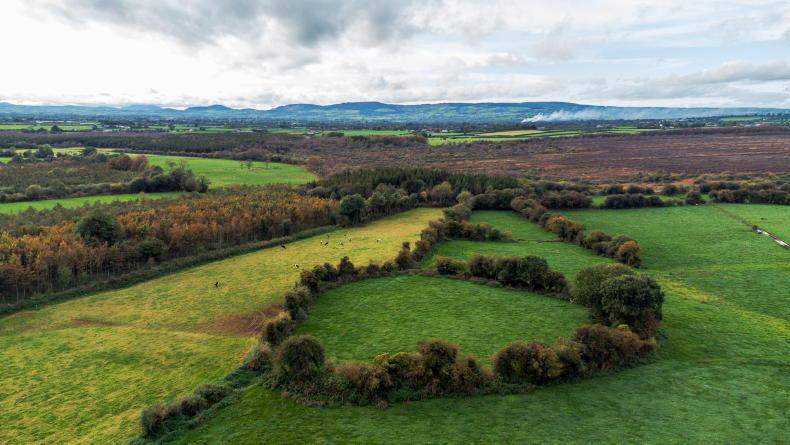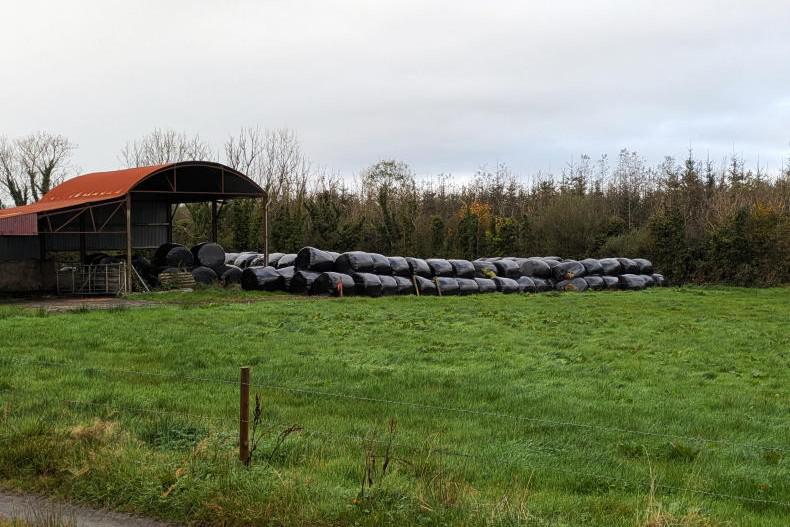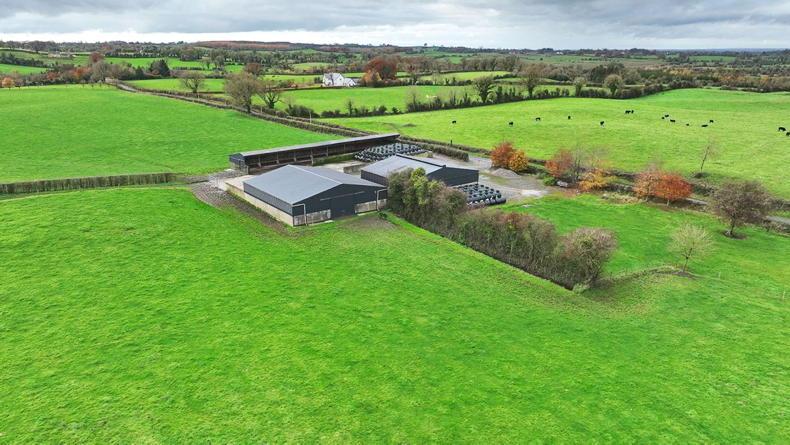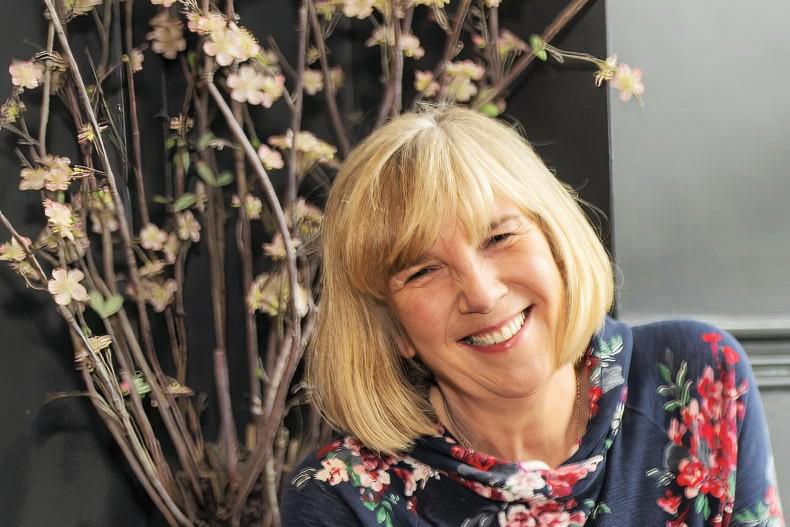Many years ago, when earlier generations of my husband’s family were still living in the old cottage on our farmyard, someone was walking through the fairy fort on our land and came across a comb. Not thinking, they picked up the comb and placed it in their pocket. Once home, they put the comb in a dish near the window and went about their day’s work.
Later that night, the window opened ever so slightly. A small hand was seen reaching into the dish. It grabbed the comb, slammed the window shut and that was that. A cautionary tale reminding us that whatever might be found in the fairy fort be left alone.
I am relaying this bit of family history to Shane Lehane, who is a folklorist and teaches at Coláiste Stiofáin Naofa (CSN) College of Further Education and University College Cork. He makes regular appearances on RTÉ’s Today with Maura and Dáithí and while he is well able to speak on many different topics associated with Irish folklore, fairy forts are both his speciality and his passion.

Shane Lehane is an academic folklorist who teaches at CSN College of Further Education and University College Cork. Pictured here on set for Today with Maura and Daithi.
Making sense of family folklore
I am telling him our story more as an aside – to help explain why I want to write about fairy forts in the first place – as opposed to have him explain the significance of the story to me.
However, I’m delighted when he offers some insight into how our family’s story likely developed.
“It’s funny that your story features a comb,” he says.
“In Ireland we call the Bean sídhe (Banshee) the ‘death messenger’ – if you hear her, you know somebody is going to die. Very often, when you see her she is combing her hair. [Other folklore says] when you bring her comb into the house, there will be absolute mayhem outside: the doors will rattle, the windows will rattle and the people inside will be terrified. What you’re supposed to do is take the tongs from the fireplace, use them to pick up the comb, open the window and reach out the window with the tongs. When you bring them back in, the comb will be gone and the (iron) tongs will be absolutely destroyed.”
Not so special
After that impressive information I’m not so impressed by what he tell me next – that I am not special in any way for having a fairy fort located on our farm!

Laughing at my reaction to this, he explains that when one studies the ordnance survey maps of the mid-19 century, they are in excess of 40,000 fairy forts in Ireland.
“Every town and village in Ireland may have originally been a fairy fort,” he says. “I usually say: throw a stone and you’ll hit one.”

Making the connection
“The interesting thing to me is why they are associated with the fairies,” he continues.
“Forget about Disney and these winged little creatures. Irish fairies look like us but they are invisible and we only see them certain times of the year: May Day (Bealtaine) and Samhain. We celebrate them on the night that precedes those days.”
When it comes to the connection between fairy forts and the fair folk themselves, Shane says it’s likely because fairies were associated with having governance over the underground realm and – since many fairy forts have underground chambers (likely used to store food all those millennia ago) – medieval Irish people considered them to be fairy dwelling places.
“As children we were told never to go near them as bad luck would come your way,” he says. “Your calves would be stillborn or your crops would get diseases, for example. I’ve been involved in the excavation of fairy forts but, from locals, you always come up against the general feeling that you’re playing with fire.”
Bovine economy
It is widely known that fairy forts were originally dwellings. If you have ever visited one, you might have noticed a ditch or two on the outer side. Shane says this is where slaves and cattle were kept. If there is only one ditch, chances are the dwelling was not a very prosperous one. If it had two or more ditches, there were more resources being kept and the dwelling was likely wealthy.
“The economy was very much cattle-based at that time, so fairy forts functioned as cattle corrals,” he explains. “This would be going back from the 5th to 12th centuries but of course fairy forts date back prior to that; going into the Iron Age from 800BC onwards.
“Cattle were everything then,” he continues. “Currency was called a ‘set’, which was equivalent to the value of half a milk-giving cow. When you paid your taxes, you would be paying according to milked cows (basically, paying in butter and cheese).”
The circular design of the fairy forts also served as security, since at that time cattle raiding was the norm.
“Irish people were raiding each other left, right and centre. The Vikings get bad press,” Shane laughs.
Dangerous times
As Samhain and May Day are the two days in the Celtic calendar where we might be able to glimpse a fairy, these were also the most dangerous times for fairy abductions. To get your child back or whoever was taken, you often had to go to a crossroads at night. This is symbolic as these times of year can also be considered “crossroads” as such – a change of season, a full moon. Shane says besides crossroads, fairy forts were considered the other magical location (associated with fairies) on these days.
“You might hear music in the ring fort – music from the other world,” he says of the general superstitions around fairy forts. “A long time ago blackthorn was considered a fairy tree because many people would get pierced by a thorn and then, the times being what they were, sepsis would happen and people would die. Mountain Ash with red berries is considered to have huge association with fairies. These would have all grown around fairy forts.”
When it comes to his own beliefs, Shane says he “isn’t necessarily interested in the ‘what’, he is interested in the ‘why’”.
“Living in the countryside, I used to think I heard the Bean sídhe all the time – it turns out it was a vixen fox,” he laughs. “But I never tire of hearing stories like yours.”
Do you have a personal folklore story you would like Shane to hear? You can reach out to him by email: shaneyellowhouse@gmail.com or write to us for publication.
Read more
A look into Ireland’s early modern eating habits
Festive food rituals
Many years ago, when earlier generations of my husband’s family were still living in the old cottage on our farmyard, someone was walking through the fairy fort on our land and came across a comb. Not thinking, they picked up the comb and placed it in their pocket. Once home, they put the comb in a dish near the window and went about their day’s work.
Later that night, the window opened ever so slightly. A small hand was seen reaching into the dish. It grabbed the comb, slammed the window shut and that was that. A cautionary tale reminding us that whatever might be found in the fairy fort be left alone.
I am relaying this bit of family history to Shane Lehane, who is a folklorist and teaches at Coláiste Stiofáin Naofa (CSN) College of Further Education and University College Cork. He makes regular appearances on RTÉ’s Today with Maura and Dáithí and while he is well able to speak on many different topics associated with Irish folklore, fairy forts are both his speciality and his passion.

Shane Lehane is an academic folklorist who teaches at CSN College of Further Education and University College Cork. Pictured here on set for Today with Maura and Daithi.
Making sense of family folklore
I am telling him our story more as an aside – to help explain why I want to write about fairy forts in the first place – as opposed to have him explain the significance of the story to me.
However, I’m delighted when he offers some insight into how our family’s story likely developed.
“It’s funny that your story features a comb,” he says.
“In Ireland we call the Bean sídhe (Banshee) the ‘death messenger’ – if you hear her, you know somebody is going to die. Very often, when you see her she is combing her hair. [Other folklore says] when you bring her comb into the house, there will be absolute mayhem outside: the doors will rattle, the windows will rattle and the people inside will be terrified. What you’re supposed to do is take the tongs from the fireplace, use them to pick up the comb, open the window and reach out the window with the tongs. When you bring them back in, the comb will be gone and the (iron) tongs will be absolutely destroyed.”
Not so special
After that impressive information I’m not so impressed by what he tell me next – that I am not special in any way for having a fairy fort located on our farm!

Laughing at my reaction to this, he explains that when one studies the ordnance survey maps of the mid-19 century, they are in excess of 40,000 fairy forts in Ireland.
“Every town and village in Ireland may have originally been a fairy fort,” he says. “I usually say: throw a stone and you’ll hit one.”

Making the connection
“The interesting thing to me is why they are associated with the fairies,” he continues.
“Forget about Disney and these winged little creatures. Irish fairies look like us but they are invisible and we only see them certain times of the year: May Day (Bealtaine) and Samhain. We celebrate them on the night that precedes those days.”
When it comes to the connection between fairy forts and the fair folk themselves, Shane says it’s likely because fairies were associated with having governance over the underground realm and – since many fairy forts have underground chambers (likely used to store food all those millennia ago) – medieval Irish people considered them to be fairy dwelling places.
“As children we were told never to go near them as bad luck would come your way,” he says. “Your calves would be stillborn or your crops would get diseases, for example. I’ve been involved in the excavation of fairy forts but, from locals, you always come up against the general feeling that you’re playing with fire.”
Bovine economy
It is widely known that fairy forts were originally dwellings. If you have ever visited one, you might have noticed a ditch or two on the outer side. Shane says this is where slaves and cattle were kept. If there is only one ditch, chances are the dwelling was not a very prosperous one. If it had two or more ditches, there were more resources being kept and the dwelling was likely wealthy.
“The economy was very much cattle-based at that time, so fairy forts functioned as cattle corrals,” he explains. “This would be going back from the 5th to 12th centuries but of course fairy forts date back prior to that; going into the Iron Age from 800BC onwards.
“Cattle were everything then,” he continues. “Currency was called a ‘set’, which was equivalent to the value of half a milk-giving cow. When you paid your taxes, you would be paying according to milked cows (basically, paying in butter and cheese).”
The circular design of the fairy forts also served as security, since at that time cattle raiding was the norm.
“Irish people were raiding each other left, right and centre. The Vikings get bad press,” Shane laughs.
Dangerous times
As Samhain and May Day are the two days in the Celtic calendar where we might be able to glimpse a fairy, these were also the most dangerous times for fairy abductions. To get your child back or whoever was taken, you often had to go to a crossroads at night. This is symbolic as these times of year can also be considered “crossroads” as such – a change of season, a full moon. Shane says besides crossroads, fairy forts were considered the other magical location (associated with fairies) on these days.
“You might hear music in the ring fort – music from the other world,” he says of the general superstitions around fairy forts. “A long time ago blackthorn was considered a fairy tree because many people would get pierced by a thorn and then, the times being what they were, sepsis would happen and people would die. Mountain Ash with red berries is considered to have huge association with fairies. These would have all grown around fairy forts.”
When it comes to his own beliefs, Shane says he “isn’t necessarily interested in the ‘what’, he is interested in the ‘why’”.
“Living in the countryside, I used to think I heard the Bean sídhe all the time – it turns out it was a vixen fox,” he laughs. “But I never tire of hearing stories like yours.”
Do you have a personal folklore story you would like Shane to hear? You can reach out to him by email: shaneyellowhouse@gmail.com or write to us for publication.
Read more
A look into Ireland’s early modern eating habits
Festive food rituals











SHARING OPTIONS